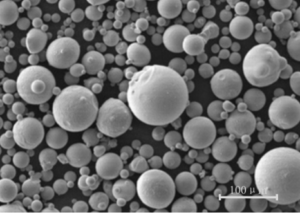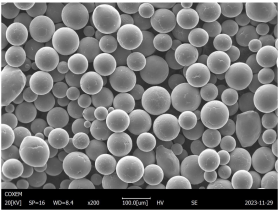How do AM Materials Contribute to Sustainable Manufacturing and Design?
In recent years, Additive Manufacturing (AM), also known as 3D printing, has revolutionized various industries with its innovative approach to manufacturing and design. One of the significant advantages of AM lies in its ability to contribute to sustainable practices. By minimizing waste, optimizing material usage, and enabling complex geometries, AM materials have emerged as a key player in sustainable manufacturing and design. In this article, we will explore how AM materials are making a positive impact on sustainability and shaping the future of the manufacturing industry.
The Rise of Additive Manufacturing (AM)
Understanding the Basics
Before delving into the sustainable aspects of AM materials, it’s crucial to grasp the fundamentals of additive manufacturing. Unlike traditional subtractive methods, such as milling or cutting, AM builds objects layer by layer, using computer-aided design (CAD) models as a reference. This layer-by-layer approach offers unprecedented flexibility and freedom in design, leading to enhanced innovation possibilities.
The Benefits of AM Materials
AM materials come in various forms, including polymers, metals, ceramics, and composites. Each material possesses unique characteristics that make it suitable for specific applications. One of the significant advantages of AM materials is their ability to reduce material waste compared to traditional manufacturing processes. By precisely depositing material only where needed, AM minimizes material consumption and eliminates excess waste. This efficiency directly contributes to sustainability by reducing the environmental footprint of manufacturing operations.
Environmental Impact of AM Materials
Waste Minimization
Conventional manufacturing methods often result in significant material waste due to subtractive processes. In contrast, AM materials enable a “just-in-time” approach to production, ensuring that only the necessary amount of material is used. This waste minimization not only reduces material costs but also decreases the overall environmental impact of manufacturing operations.
Energy Efficiency
AM materials also contribute to sustainability through improved energy efficiency. Traditional manufacturing processes often require extensive energy consumption, particularly in shaping, molding, or machining materials. In contrast, AM technologies consume less energy during the production process, making them a more sustainable alternative. Additionally, the decentralized nature of AM allows for localized production, reducing the need for long-distance transportation and further lowering energy requirements.
Design Freedom and Optimization
Complex Geometries
AM materials provide designers with unprecedented freedom to create complex geometries that were previously unattainable using traditional manufacturing methods. This design freedom enables the production of lightweight structures with optimized material distribution, leading to reduced material usage and enhanced product performance. By eliminating excess material, AM materials contribute to sustainability by reducing resource consumption and minimizing the overall weight of manufactured components.
Consolidation and Part Integration
Another sustainable advantage of AM materials lies in the ability to consolidate multiple parts into a single component. Traditional manufacturing often requires the assembly of numerous parts, leading to increased material usage, additional assembly steps, and higher energy consumption. With AM, the consolidation of parts becomes feasible, resulting in reduced material waste, streamlined assembly processes, and improved overall product efficiency.
AM Materials in Sustainable Industries
Healthcare and Medical Applications
AM materials have found significant applications in the healthcare industry, contributing to sustainability in various ways. Personalized medical devices, prosthetics, and implants can be manufactured using AM, reducing material waste by tailoring each product to the individual’s specific needs. Furthermore, AM allows for the creation of intricate internal structures, improving functionality and reducing the weight of medical devices.
Aerospace and Automotive Industries
The aerospace and automotive sectors have also embraced AM materials due to their sustainability benefits. By utilizing lightweight AM components, these industries can achieve fuel efficiency, reducing carbon emissions and environmental impact. Moreover, AM enables rapid prototyping and iteration, resulting in faster development cycles and reduced waste during the design phase.
Conclusion
In conclusion, AM materials play a pivotal role in advancing sustainable manufacturing and design practices. Through waste minimization, energy efficiency, and design optimization, AM has emerged as a transformative technology with a positive environmental impact. The ability to create complex geometries, consolidate parts, and tailor products to individual needs further reinforces the sustainable benefits of AM materials. As industries continue to adopt and optimize additive manufacturing processes, we can expect further advancements towards a greener and more sustainable future.
FAQs
1. Are AM materials more expensive compared to traditional manufacturing materials?
While AM materials may have a higher upfront cost, the overall cost can be offset by reduced material waste, energy efficiency, and streamlined production processes. In the long run, AM can provide cost savings, particularly for complex designs and low-volume production.
2. Are AM materials suitable for large-scale manufacturing?
AM materials are currently more commonly used for low to medium volume production and prototyping. However, advancements in technology and materials are making large-scale additive manufacturing increasingly feasible and cost-effective.
3. Can AM materials be recycled?
Yes, many AM materials can be recycled. However, the recyclability depends on the specific material used. Efforts are being made to develop recycling methods and systems to further enhance the sustainability of AM materials.
4. Is AM limited to specific industries?
No, AM materials have applications across various industries, including aerospace, automotive, healthcare, consumer goods, and more. The versatility and adaptability of AM make it suitable for a wide range of manufacturing and design needs.
5. How does AM contribute to circular economy principles?
AM promotes circular economy principles by reducing material waste, enabling localized production, and facilitating product customization. These factors align with the idea of producing and consuming goods in a more sustainable and environmentally friendly manner.

